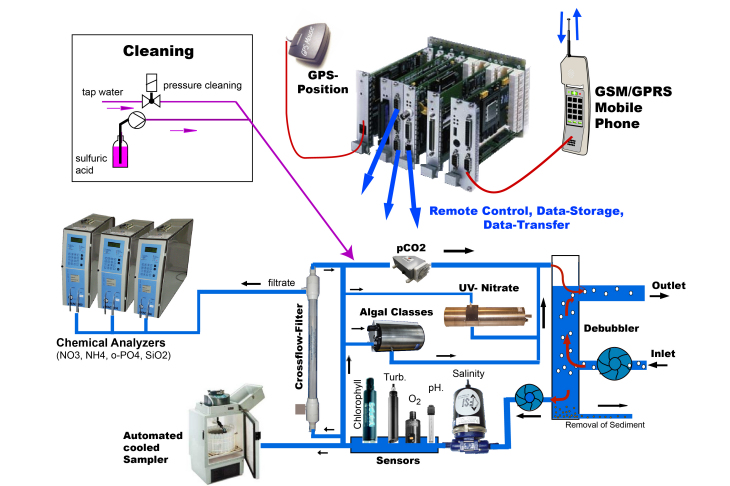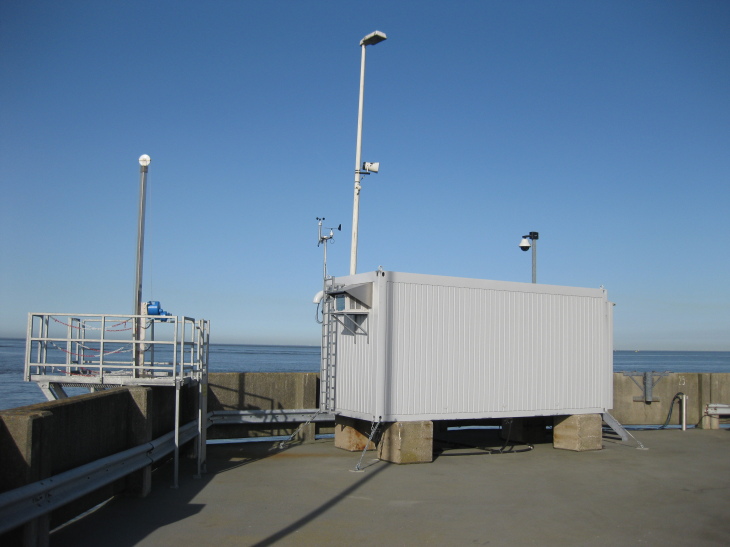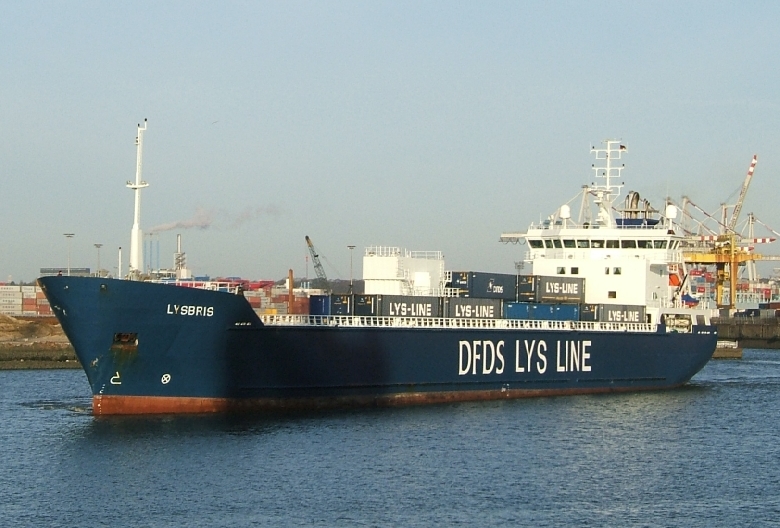FerryBox

FerryBoxes are used on ships traveling regularly scheduled routes. -Image: Hereon-
The FerryBox, developed by Institute of Coastal Ocean Dynamics is an automated measurement system for determining physical and biogeochemical variables in surface seawater. FerryBoxes are installed onboard of commercial vessels cruising along regularly scheduled routes (e.g., on ferries or cargo ships).
A FerryBox system consists of a water inlet from which seawater is pumped into the measuring circuit containing multiple sensors. This inlet may be positioned at the sea-chest or through the hull of the ship, using a valve especially designed for the FerryBox purposes. For correct seawater temperature measurements, an extra temperature sensor is installed close to the inlet or on the hull of the vessel. An optional debubbling unit removes air bubbles, which may enter the circuit during rough seas.

Schematic layout of a FerryBox system. -Image: Hereon-
A basic FerryBox setup includes sensors for temperature, salinity, turbidity and chlorophyll-a fluorescence, and a GPS receiver for position control. The systems at Hereon include additional sensors, e.g. for dissolved oxygen, pH, pCO2 or algal groups, as well as meteorological instruments. Furthermore, a cooled water sampler allows for collection of bottle samples at certain positions for subsequent lab analysis.
The FerryBox system is controlled by a computer that also logs the observations. Along each route, the FerryBox is controlled by the position of the vessel, to ensure that operation stops before reaching the harbor, and restarts as soon as the ship leaves the harbor. Together with GPS information, the data are transmitted to shore via mobile phone connection or satellite communication. Biofouling is prevented by automatic cleaning of the sensors with tap water, and by rinsing the entire unit with acidified water or water containing a detergent when the system stops.

FerryBox routes operated at Hereon in the North Sea. -Image: Wilhelm Petersen/Hereon-
The FerryBox system measures all variables within a time interval of approximately 20 seconds, corresponding to a spatial resolution of one hundred meters depending on the speed of the vessel. Such regular water quality measurements taken along a fixed route enable detailed and continuous observations over a long period of time.
The FerryBox data can be accessed from the Hereon FerryBox Database.
In addition to operating FerryBoxes along fixed routes, FerryBoxes are also installed on research vessels such as the RV Polarstern, as well as on the cruise ship Mein Schiff 3. FerryBoxes are also installed at fixed positions, e.g. the container deployed in the Elbe River estuary in Cuxhaven, Germany.

Stationary Ferrybox in Cuxhaven. -image: Hereon-
Besides these Hereon installations, FerryBox systems are operated within a network of European partners, mainly national marine research institutes and environmental agencies.
This network is organized under the umbrella of EuroGOOS in the European FerryBox Task Team, which is led by Hereon and NIVA (Norway). Within this European FerryBox community, a common database and data portal for all European FerryBoxes has been established, based on the database developed at Hereon.
Further information on the European FerryBox activities can be found on the FerryBox Community website.
More
Marine Research on Ferries. Seawater salinity and temperature are measured with the help of FerryBoxes, automated measurement systems on-board ferries.
(Article on ESKP)







